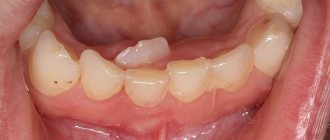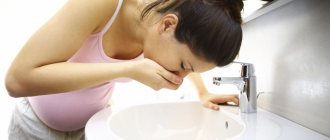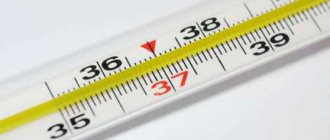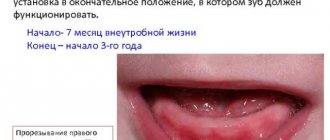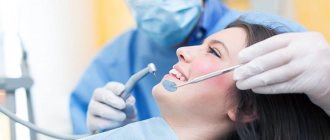What to do if teeth do not erupt “on time”?
Nothing to do. As stated earlier, the timing is quite relative and not strict data. There is such a thing as the individual characteristics of a child. Plus neonatal indicators, physical constitution, etc. Thus, the timing of the appearance of teeth in your child is normal for him. The same applies to permanent teeth.
The later the teeth appear, the healthier they will be?
Is not a fact. The timing of teething does not affect their “quality”.
What sedatives can be used during teething? Do they influence the process itself?
No, such drugs do not affect the process of teeth formation and, as a rule, have no side effects. For children with allergies, there is a sedative called Doctor Baby that does not contain lidocaine. Almost all gels contain lidocaine and inert fillers (cooling menthol, astringents and flavoring additives). You can use Dentinox, Kalgel (be careful with diathesis, because it is sweet), Kamistad (very effective, but you need to know when to stop), Mundizal, Cholisal, Solcoseryl dental paste (especially good in the presence of wounds or ulcers).
How often should such drugs be used?
Soothing gels are not antibiotics and do not need to be used according to a specific regimen. If the child is in pain, apply it, but if everything is calm, don’t. But it’s better not to use it more than 3-4 times a day and for longer than 3 days in a row.
Changing your diet as a cause of light stools
The appearance of light-colored stools is usually very alarming for parents, but often the reason for this may simply be changes in the children's menu. Most often this is the consumption the day before of a large amount of dairy food with a high percentage of fat content - undiluted homemade milk, cream, cottage cheese, sour cream, fermented milk drinks. They can give the stool a light yellow or light cream tint.
The same color of stool may appear when a child eats a large amount of sweets. If the child feels well, does not show anxiety, there is no fever or abdominal pain, it is worth observing the stool for 1-2 days. Usually, after adjusting the diet, this symptom disappears.
Is it possible to speed up teething?
Medication - no. But massaging your gums won't hurt at all. Using a clean finger, gently and gently massage your baby's gums. The baby will feel better, and the tooth will cut through faster. Just do not press hard so as not to injure the gums. You can give your child a cool spoon or pacifier to hold in his mouth. Try buying special teethers with liquid. They are placed in the refrigerator for a while, and then given to the child to chew on. All these methods are good in moderation, do not overdo it.
Can bad breath occur during teething and what is the cause?
The process of teething is associated with partial decomposition (lysis) of the mucous membrane under the action of salivary enzymes. We all notice that the amount of saliva increases sharply during this period. In this case, indeed, indicators such as viscosity, color and smell of saliva may change. Another factor is the presence of weak antibacterial substances in saliva, which are designed to prevent infection of the wound when a tooth cuts through the gum. A certain amount of blood also enters the oral cavity. When it decomposes, a sour (metallic) odor may appear.
A sharp increase in temperature during teething. What to do?
Teething does not cause a temperature jump to 39-40 degrees. Only a slight increase is possible, which is normal. Be careful: teething should not cause high fever, diarrhea, vomiting, complete loss of appetite, cramps or choking. If you have such symptoms, even if you attribute it to your teeth, consult a doctor. It is also not recommended to use antipyretics and painkillers without consulting him.
What is the difference between an increase in temperature due to teething and an increase due to other reasons? How long can the elevated temperature last in the first case?
It all depends on the individual characteristics of the child. Basically, hyperthermia and diarrhea are only secondary signs of the teething process, which in itself is a serious physiological turning point for a small organism. Fever is, rather, a reaction to inflammation of the oral mucosa. After all, at the site where the tooth exits, irritation forms, often a wound that can become infected. Thus, hyperthermia is caused not by the mechanism of tooth formation itself, but by side effects. After all, the eruption of permanent teeth, despite the similarity of histological and physiological changes, causes symptoms of colds and diarrhea extremely rarely. And it is quite simple to explain their appearance in children: changes in diet and diet, constant foreign objects in the mouth, microflora disturbance, weakened immunity in the nasopharynx. So, if high fever and loose stools continue for more than 72 hours, then teething really has nothing to do with it.
Rotavirus infection and the contents of a child's potty
Fever and vomiting may be symptoms of rotavirus infection.
If, in addition to a change in the color of the stool, a child experiences an increase in temperature, as well as signs of intoxication such as diarrhea or vomiting (usually both of these signs), then it is quite possible that he has a rotavirus infection.
The stool changes color from light yellow on the first day to gray-white in the next two to three days. In addition to these symptoms, respiratory manifestations may appear: redness of the throat, runny nose, cough, as well as headache and abdominal pain.
Teething in infants
Possible characteristics of teeth in children at the teething stage. Stay up to date.
The expansion of the spaces between the teeth is caused by the growth of the jaws. During the transition from baby teeth to permanent teeth, it is considered a normal condition. A wide gap between the upper anterior incisors is usually associated with a deep-lying maxillary frenulum. An orthodontist should observe and treat such a gap between the teeth;
- a blackish edging on the neck of the tooth can form when taking soluble iron supplements, as well as during a chronic inflammatory process (precipitation of bacteria from the leptotrichium group);
- yellowish-brown staining of teeth may be associated with the use of antibiotics - by the mother in the 2nd half of pregnancy or by the child himself during the formation of teeth;
- yellowish-greenish coloring is caused by severe disturbances in bilirubin metabolism, hemolytic conditions (destruction of red blood cells);
- reddish staining of tooth enamel is characteristic of a disease called porphyria - a congenital disorder of the metabolism of porphyrin pigment;
- malocclusions are formed by the uneven growth of the child’s jaws, as well as prolonged sucking of the nipples;
- Anomalies in the location of teeth occur for a number of reasons: trauma, congenital disorders of connective tissue metabolism, constitutional reasons (small jaw size), tumors of the alveolar process of the jaw.
- the absence of teeth before one year of age is extremely rarely associated with edentia (lack of tooth buds), which can be checked using radiovisiography as prescribed by a pediatric dentist.
If teeth erupt on time and in a certain order, this indicates the normal development of the child’s body. After all, this physiological process is in direct connection with the general health of the baby. Some atypical cases may indirectly indicate the presence of pathology. But only a special examination of the child can confirm or refute the assumptions made. The reasons must be identified and analyzed by a specialist.
Stool color in children - the norm and its variations
When breastfeeding, your stool should be yellow or apricot in color.
The stool of children and adults is colored by the bile pigment bilirubin, a derivative of erythrocytes, red blood cells. The liver filters out this pigment, then removes it through the bladder and intestines. It is considered normal for children's stool to be brown in various shades.
If this is the stool of a newborn or a baby under one year of breastfeeding, then it is predominantly yellow or apricot in color. For bottle-fed or mixed-fed babies, a cream, brown or gray tint is added to the traditional color, depending on the type of complementary foods or formula.
In children older than one year, the color of the stool can be affected by the foods the baby eats. Thus, beets give the contents of the pot a red color, carrots give them a bright orange color, and drugs taken for anemia turn them dark brown or black. The predominance of meat products in baby food also turns the stool dark brown.
Light-colored stools are a reason to get tested for hepatitis
Hepatitis can cause changes in a child's stool.
It is this reason that the child’s parents try to exclude when they see white stool, which is one of the signs of infection with the hepatitis virus. In addition, the following symptoms may be present:
- darkening of urine (dark beer color)
- pain in the right upper abdomen and severe bloating
- yellowing of the skin
- yellowing of the sclera of the eyes
- loss of appetite
- nausea
- heat.
To clarify the diagnosis, you need to contact a pediatrician or infectious disease specialist. Most likely, they will order laboratory tests to clarify the diagnosis. Hepatitis can also have a smoothed course, when there are no other symptoms except increased fatigue and pain in the right hypochondrium.
Medicines that change stool color
This symptom may be a side effect when using certain categories of medications. Stool becomes discolored due to the liver's reaction to certain medications. They may be:
- Paracetamol
- Acetylsalicylic acid derivatives: Aspirin, Laspal
- Non-steroidal anti-inflammatory drugs: Ibuprofen, Diclofenac, Nimesulide
- Antifungal: Griseofulvin
- Antiepileptic drugs: Acediprol, Valproic acid, Convulex, Leptilan
If such a reaction to the use of drugs occurs, you should consult with the specialist who prescribed the treatment in order to avoid complications for the liver and gastrointestinal tract.
Dysbacteriosis and light stools
Dysbacteriosis in children can occur after taking antibiotics.
One of the side effects of taking antibiotics can be dysbiosis - a change in the balance of microflora in the intestines and stomach towards the predominance of pathogenic bacteria. This condition is manifested by a violation of the usual stool consistency, alternating diarrhea and constipation, and the appearance of light-colored stools with pieces of undigested food and mucus.
Loss of appetite, restless sleep, weight loss due to dysbiosis are also common. You should not attempt to correct this condition on your own; you should consult a gastroenterologist.
Most likely, he will advise taking prebiotics (Lactobacterin, Bifidumbacterin, Acipol), after which the stool should take on a normal color and consistency.
